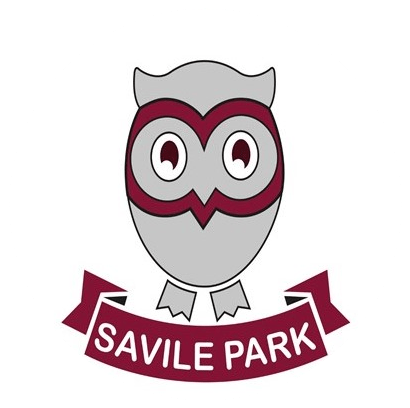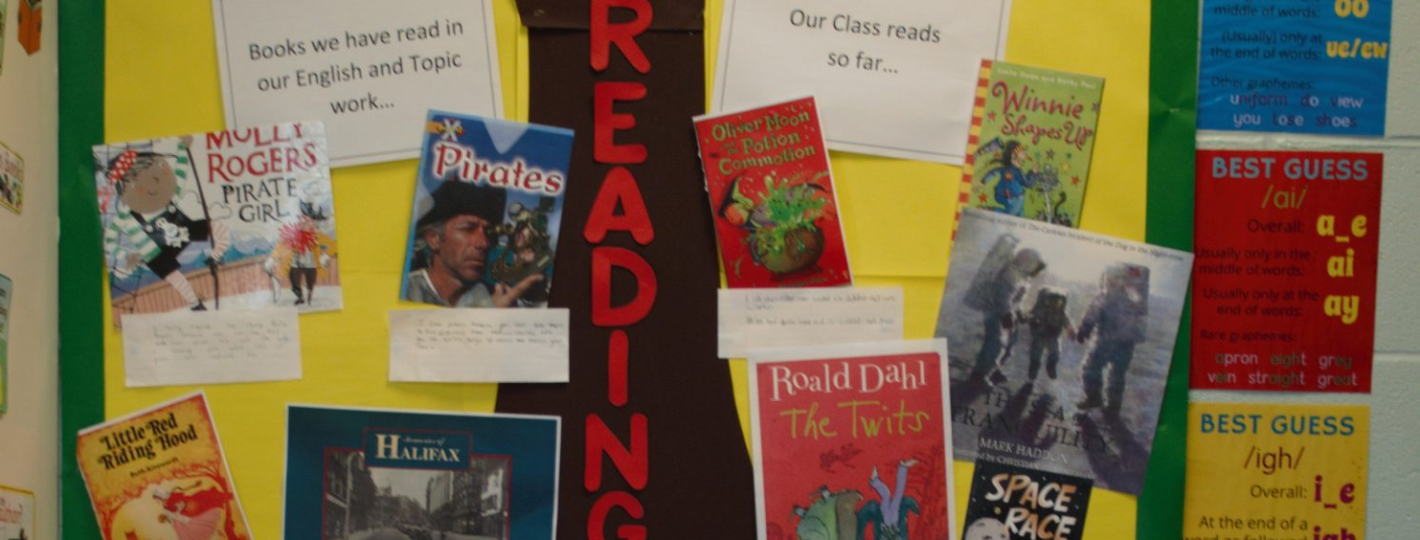Reading
Reading is essential for everything that we do at Savile Park. Our Curriculum has reading interwoven throughout all subjects and is at the heart of learning. Every classroom proudly displays reading areas which contain a range of books which children can read for themselves and books which are read by the teachers on a daily basis. Storytime take place throughout school and books across different genres and age groups. “Books we have read” are placed on display and show the progression of stories, books and texts throughout school.
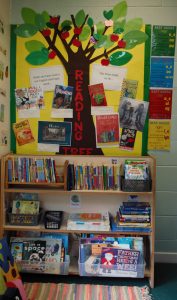
In Early Years and Key Stage One we teach reading through following the Little Wandle phonics scheme. All staff are trained in the scheme and there is a clear and consistent approach to reading and writing.
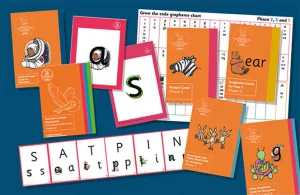
Children arrive in Reception and begin learning phonemes and graphemes from phase 2. A carefully managed yet challenging scheme gradually builds upon letters and sounds already learnt. Children also learn a range of “tricky words” which they can read and spell from memory. Children move onto learning the digraphs of phase 3 as they build confidence throughout Reception. Daily phonics sessions encourage reading and writing and follow a clear structure. Resources, books and word cards are consistently used throughout all classes. In Reception the learning environment is filled with words, sounds and books which the children can access. Each area of learning also has opportunities for writing independently. At each phase of the scheme, children are shown how to form graphemes and letters. Children requiring extra phonics sessions are given daily “keep up” sessions which follow the same structure as lessons. Half termly assessments take place to allow teachers to strategically manage and monitor progression of all learners.
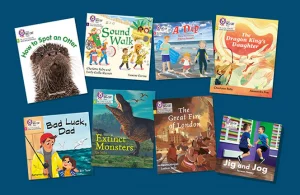
As children move into Year One the same consistent structure of phonics lessons is followed. Children move into Phase 5 which looks at how alternate digraphs, trigraphs and split digraphs are used to spell different words. Children take part in the same daily lessons and are now encouraged to “Grow the Code.” At the end of Year One the National phonics tests take place and the scheme is carefully managed to help children build the skills and knowledge necessary to complete it. The phonics scheme is accompanied by reading practice sessions which take place three times a week in small groups. Books are carefully matched to the phonetic ability of the children and are split into “Decoding, Prosody and Comprehension” sessions. Decoding sessions introduce key words and sounds which are needed to read the books. Prosody sessions encourage fluency as the children re-read the books. Comprehension checks the understanding of children as they read a range of texts and books. Discussions around reading are also formed from these reading sessions. As children move beyond Phase 5, group “Keep Up” interventions are still used to help children who would still benefit from phonics and reading. The same scheme is used and applied for children identified as needing further support throughout school.
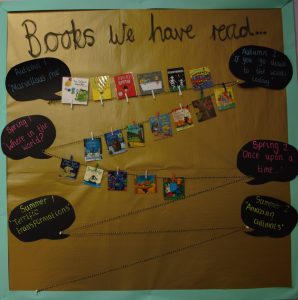
From September 2022, children in Early Years and Key Stage One will use an online reading scheme linked with the Little Wandle books. Children are encourage to read the same book three times per week. Teachers will ensure that children are allocated books to read. Each classroom will also have a “library box” where children can borrow and return different books to read at home. Children in Key Stage Two are allocated books which match their reading levels by the teachers. As children move into Years Five and Six, they are encouraged to borrow and read a wide range of texts. Upon returning books, recommendations and book reviews encourage discussion and further reading. The successful Royal Readers scheme is carried out throughout school and gives certificates for children who read three times per week or more. Any books or texts which are read at home can count towards these reads.
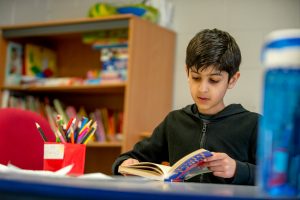
In Year Two children follow the Little Wandle Spelling scheme as a progression from phonics.
Key books and texts link with the different topics and themes carried out throughout school. Children are encouraged to develop fluency, expression and a love of reading! Interesting and exciting books at an age-appropriate level are read to the children daily. In Years Five and Six the “Reading Plus” scheme takes place and builds upon skills and knowledge gained throughout school. Reading continues to follow the same structure in Years Two and Three. Groups which are adult led follow the same structure and books are matched for the reading ability of the children. As children move into Years Five and Six a whole class text is shared, read and discussed. Where needed children of all ages have extra opportunities to read a book which is matched to their ability with an adult in school.
Home Reading
Children in Early Years and Key Stage One use an online reading scheme linked with the Little Wandle books. Children are encouraged to read the same book three times per week. Teachers will ensure that children are allocated books to read both at home and at school. Where necessary, parents are provided with the option of taking home a physical book. Each classroom has a “library box” where children can borrow and return different books to read at home. Children in Key Stage Two are allocated books which match their reading levels by the teachers. As children move into Years Five and Six, they are encouraged to borrow and read a wide range of texts. Upon returning books, recommendations and book reviews encourage discussion and further reading.
For more information about our phonics scheme and ways you can support your child’s progress in reading, please visit https://www.littlewandlelettersandsounds.org.uk/resources/for-parents/
How can I support my child with reading?
- Encourage family and friends to share books with your child. The more your child sees you and others reading, the more they will want to read too.
- Visit your local library together. It is fun choosing new books to read together. Keep an look out for special events at the library or local book shops that you can join in with.
- Look at the pictures and talk about them. For example, ‘Can you find the dog?’ ‘What else can you see?’
- Reread your child’s favourite stories as many times as your child wants to hear them. Choose books and authors that your child enjoys.
- Ask questions when you are reading together, such as ‘What can you see on this page?’ ‘How do you think the characters feel?’ and ‘What is the story about?’
- Sit close together and get comfy! You could encourage your child to hold the book and turn the pages. Use funny voices, puppets or props to bring the story alive.
- To help your child develop their vocabulary, talk to your child as much as possible about what you are doing. Ask them about their day. What have they been doing? What games did you play today?
